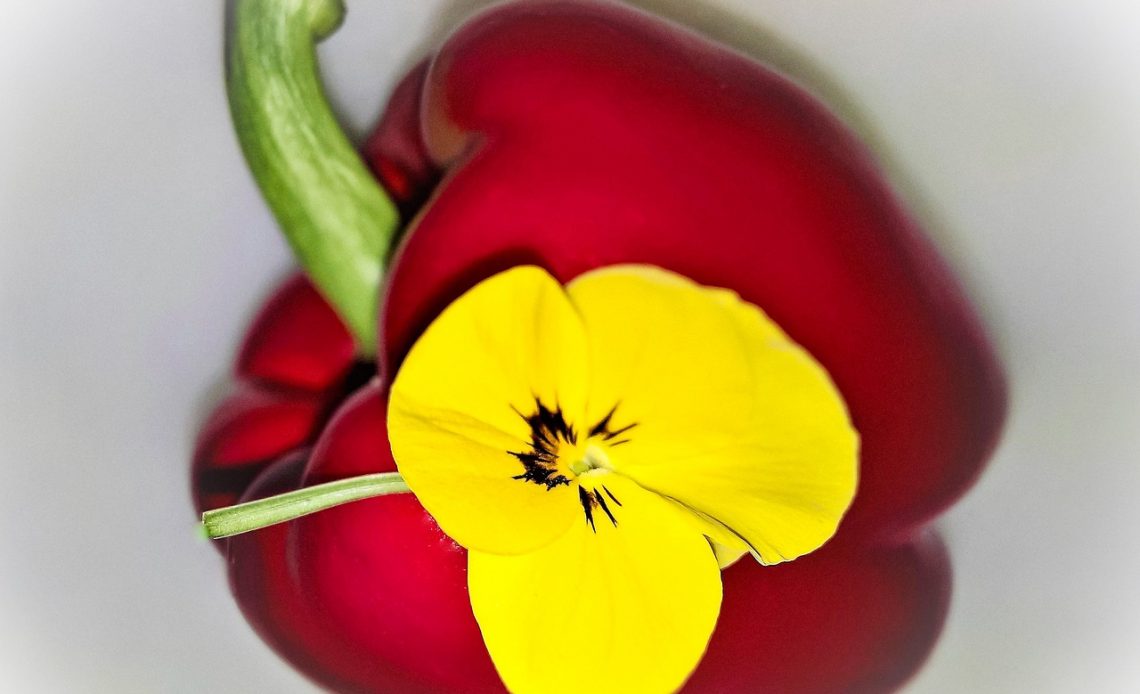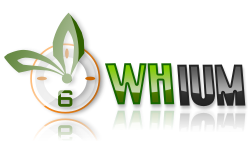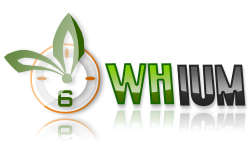
Are you looking for a fun and creative way to amp up your nutrition? Look no further than incorporating edible flowers into your diet! In this article, we will explore how to make a delicious flower salad or smoothie that not only tastes great but also provides numerous health benefits.
When it comes to edible flowers, the possibilities are endless. From vibrant pansies to delicate violets, these beautiful blooms can add a pop of color and flavor to your meals. But it’s not just about aesthetics – consuming flowers can also enhance the nutritional value of your dishes.
Edible flowers are a rich source of antioxidants, vitamins, and minerals. They can improve digestion, boost immunity, and promote overall well-being. By incorporating these floral delights into your salads or smoothies, you can elevate your nutrition to a whole new level.
So, how do you make a flower salad or smoothie? It’s easier than you might think. We have curated some easy and delicious recipes that will help you get started. Whether you prefer a refreshing salad or a creamy smoothie, there’s a recipe for everyone.
To make a flower salad, start by selecting a variety of edible flowers that complement each other in terms of taste and color. Mix them with fresh greens, such as lettuce or spinach, and add some crunchy vegetables like cucumbers or radishes. Top it off with a light dressing, and you have a visually appealing and nutritious salad.
If you’re more of a smoothie person, fear not – we have you covered. Blend together your favorite fruits, such as berries or mangoes, with a handful of edible flowers. Add some yogurt or milk for creaminess and a touch of honey for sweetness. The result? A delightful and nutrient-packed smoothie that will leave you feeling energized.
So, what are you waiting for? It’s time to get creative with your nutrition and incorporate edible flowers into your diet. Explore the benefits of consuming flowers and try out these easy recipes. Your taste buds and your body will thank you!
Benefits of Edible Flowers
When it comes to incorporating edible flowers into your diet, the benefits are truly blooming. These delicate and vibrant blooms not only add beauty to your meals but also offer a plethora of health benefits. Consuming edible flowers can be a fantastic way to boost your nutrition and overall well-being.
One of the key advantages of edible flowers is their rich source of antioxidants. These powerful compounds help protect your body against harmful free radicals and reduce the risk of chronic diseases. In addition, edible flowers are packed with vitamins and minerals, providing a natural and nutrient-dense boost to your meals.
But the benefits don’t stop there. Edible flowers can also improve digestion by promoting healthy gut flora and aiding in the absorption of nutrients. They can help soothe inflammation in the digestive system and support optimal digestion. Furthermore, edible flowers have immune-boosting properties, helping to strengthen your body’s defenses and enhance overall well-being.
So, whether you choose to sprinkle some colorful petals on your salad or infuse them into a refreshing smoothie, incorporating edible flowers into your diet can be a delightful and nutritious choice.
Choosing Edible Flowers
When it comes to choosing edible flowers for your salad or smoothie, there are a few key factors to consider. First, it’s important to know which flowers are safe to consume. Not all flowers are edible, and some can be toxic if ingested. To ensure your safety, stick to flowers that are specifically labeled as edible or that have been grown for culinary purposes.
There are many different types of edible flowers available, each with their own unique flavors and characteristics. Some popular options include nasturtiums, marigolds, pansies, and violets. Nasturtiums, for example, have a peppery taste that adds a zesty kick to your dishes, while marigolds have a slightly citrusy flavor. Pansies and violets, on the other hand, have a delicate floral taste that pairs well with both sweet and savory dishes.
To ensure that the flowers you choose are safe for consumption, it’s important to source them from reputable suppliers or grow them yourself. If you’re purchasing edible flowers, look for organic options that have been grown without the use of pesticides or other harmful chemicals. If you’re growing your own, be sure to research the specific care requirements for each type of flower to ensure they are safe to eat.
In summary, choosing edible flowers for your salad or smoothie involves selecting safe options and considering their flavors. Stick to flowers that are labeled as edible or grown for culinary purposes, and explore the wide variety of flavors that different flowers can bring to your dishes. Whether you prefer a peppery kick or a delicate floral taste, there’s an edible flower out there to suit your preferences.
Popular Edible Flowers
When it comes to incorporating edible flowers into your culinary creations, there are several popular options to choose from. These flowers not only add a burst of color and beauty to your dishes but also bring unique flavors and nutritional benefits. Let’s explore some of the most popular edible flowers and how they can enhance your meals.
Rose: Known for its delicate fragrance, roses are not just for bouquets. They can be used to infuse dishes with a subtle floral flavor. Rose petals are commonly used in desserts, jams, and syrups.
Lavender: With its calming aroma, lavender is a versatile flower used in both sweet and savory dishes. Its floral and slightly citrusy flavor pairs well with desserts, teas, and even meat dishes.
Nasturtium: These vibrant flowers come in a range of colors and have a peppery taste, similar to watercress. They are often added to salads, sandwiches, and stir-fries to add a spicy kick.
Calendula: Also known as marigold, calendula flowers have a slightly tangy and peppery flavor. They can be used to garnish salads, soups, and rice dishes, adding a pop of color and a mild spice.
Pansy: Pansies are not only visually appealing with their bright colors, but they also have a mild, slightly minty flavor. They are often used to decorate cakes, pastries, and salads.
Chive Blossoms: Chive blossoms have a mild onion flavor and can be used as a garnish or added to salads, soups, and creamy sauces. They add a touch of elegance to any dish.
These are just a few examples of popular edible flowers, but there are many more to discover. Experiment with different varieties to find the flavors that appeal to your taste buds and make your dishes visually stunning.
Recipes with Edible Flowers
Get ready to embark on a culinary adventure with these creative recipes that incorporate the beauty and flavor of edible flowers. From refreshing flower salads to vibrant flower-infused smoothies, these dishes are not only visually appealing but also packed with nutrients.
To create a flower salad, start by selecting a mix of colorful edible flowers such as nasturtiums, pansies, and marigolds. Wash the flowers gently and pat them dry. Toss them with a variety of fresh greens like lettuce, spinach, and arugula. For an extra burst of flavor, add some sliced strawberries or citrus fruits. Drizzle your favorite dressing over the salad and enjoy the explosion of flavors and textures.
If you prefer a refreshing smoothie, try a flower-infused one. Blend together a handful of edible flowers like lavender, hibiscus, or chamomile with your choice of fruits like berries or tropical fruits. Add a splash of coconut water or almond milk and blend until smooth. The result is a delightful and nutritious smoothie that will surprise your taste buds.
Remember, when using edible flowers in recipes, ensure that they are safe for consumption and free from pesticides. Always follow step-by-step instructions to create these visually appealing and delicious dishes. So, why not add a touch of surprise and explosion to your meals with these incredible recipes?
Tips for Growing Edible Flowers
If you’re interested in growing your own edible flowers at home, you’ve come to the right place. In this section, we will provide you with expert tips and best practices for cultivating beautiful and delicious flowers that you can incorporate into your meals.
Soil Requirements: Edible flowers thrive in well-drained soil that is rich in organic matter. Make sure to prepare the soil by removing any weeds or debris and adding compost or organic fertilizer to provide the necessary nutrients for the flowers to grow.
Watering Techniques: Proper watering is crucial for the growth and development of edible flowers. It’s important to keep the soil consistently moist but not waterlogged. Water the plants deeply, ensuring that the water reaches the root zone. Avoid overhead watering, as it can lead to the development of fungal diseases.
Harvesting Tips: When it comes to harvesting edible flowers, timing is key. Most flowers are at their peak flavor and nutritional value when they are fully open but not yet wilted. Gently pluck the flowers from the plant, being careful not to damage the stem or surrounding foliage. Store the harvested flowers in a cool place or use them immediately in your culinary creations.
By following these tips and guidelines, you’ll be able to grow your own beautiful and flavorful edible flowers right in your own backyard. Enjoy the satisfaction of harvesting fresh flowers and adding a unique touch to your meals with these homegrown delights.
Precautions and Considerations
When incorporating edible flowers into your meals, it’s important to understand and take certain precautions and considerations. While edible flowers can add a delightful touch to your dishes, it’s crucial to be aware of potential allergies and toxic flowers that should be avoided.
Allergies: Just like any other food, some individuals may have allergies to specific edible flowers. It’s recommended to start with small amounts and observe any allergic reactions. If you have known allergies to certain flowers or plants, it’s best to avoid consuming them altogether.
Toxic Flowers: Not all flowers are safe for consumption. Some flowers may contain toxins or pesticides that can be harmful if ingested. It’s essential to do thorough research and only choose flowers that are confirmed to be edible. Avoid using flowers from florists or nurseries unless they are specifically labeled as edible.
Cleaning and Storage: Before using edible flowers, it’s crucial to clean them properly. Gently rinse the flowers under cold water to remove any dirt or insects. Pat them dry with a paper towel or allow them to air dry. Store the flowers in a cool, dry place until you’re ready to use them. Avoid washing the flowers too far in advance, as moisture can cause them to wilt or lose their flavor.
By taking these precautions and considerations, you can ensure the safety and enjoyment of incorporating edible flowers into your meals. Remember to always prioritize your health and well-being when experimenting with new ingredients.
Frequently Asked Questions
- Can all flowers be consumed?
Not all flowers are safe for consumption. It is important to choose edible flowers that are specifically grown for culinary purposes. Avoid consuming flowers from florists or nurseries, as they may have been treated with pesticides or other chemicals. Always do thorough research or consult a reliable source to ensure the flowers you choose are safe to eat.
- What are some popular edible flowers?
There are several popular edible flowers used in culinary preparations. Some examples include roses, lavender, violets, marigolds, and nasturtiums. Each flower has its own unique flavor profile, ranging from sweet to peppery. Experiment with different flowers to discover your favorite combinations and flavors.
- How can edible flowers enhance the nutritional value of meals?
Edible flowers are not only visually appealing but also packed with nutrients. They are a rich source of antioxidants, vitamins, and minerals that can contribute to a well-balanced diet. Incorporating edible flowers into your meals can add an extra boost of nutrition and elevate the overall health benefits of your dishes.
- Are there any precautions when using edible flowers?
Yes, there are precautions to keep in mind when using edible flowers. Some individuals may have allergies to certain flowers, so it is important to be aware of any potential allergic reactions. Additionally, it is crucial to properly clean and store edible flowers to ensure they are free from dirt, insects, or contaminants. Always follow recommended guidelines for safe consumption.
- Can I grow my own edible flowers?
Absolutely! Growing your own edible flowers can be a rewarding experience. Ensure you choose varieties that are safe for consumption and follow proper gardening practices. Consider factors such as soil quality, watering techniques, and harvesting methods. With proper care and attention, you can cultivate your own beautiful and nutritious edible flowers at home.

